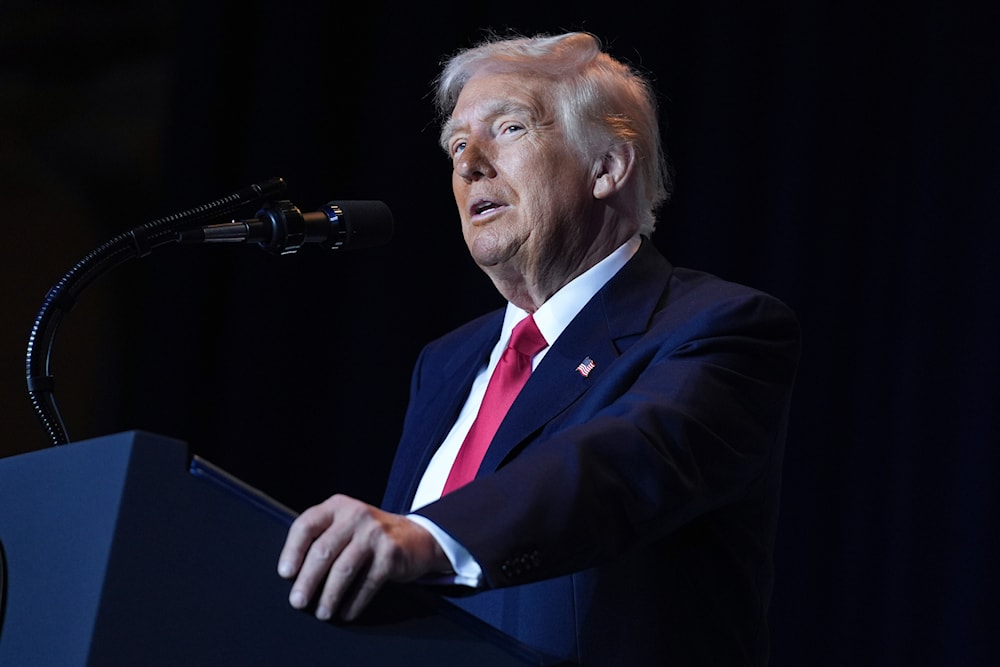US judge blocks Trump buyout program as 60,000 sign up to quit
The buyout initiative is a central part of Trump’s efforts to downsize the federal government, which he perceives as hindering his agenda.
-

US President Donald Trump speaks during the National Prayer Breakfast at Washington Hilton, on February 6, 2025, in Washington. (AP)
A US federal judge temporarily blocked the Trump administration's federal worker buyout initiative on Thursday, granting a brief victory to labor unions that were challenging the program. The decision by Judge George O'Toole in Boston delays the midnight deadline for employees to accept the buyout until at least Monday when the court will revisit the case.
Despite the pause, a White House official reported that over 60,000 federal employees have already agreed to the offer, which promises salary and benefits until October. However, critics argue the plan lacks guarantees, as funding may expire on March 14.
The buyout is part of a broader effort by the Trump administration to overhaul the federal workforce and downsize agencies, including a drastic reduction of USAID staff. The initiative has sparked protests and accusations of legal violations from unions and Democrats.
Federal employees expressed cautious optimism following the ruling. “It’s a glimmer of hope that the courts might block this resignation program,” said a General Services Administration employee. Further developments are expected at Monday’s hearing.
DOGE's actions spark privacy concerns
Additionally, Trump has enlisted billionaire Elon Musk to spearhead a dramatic reduction of the federal workforce, sparking controversy and legal threats. Musk's team has reportedly sought access to government personnel records and payment data from multiple agencies, raising significant privacy and security concerns.
New York Attorney General Letitia James, along with seven other Democratic attorneys general, announced plans to sue to block Musk's quasi-governmental "Department of Government Efficiency" from obtaining sensitive employee information.
In a statement, James said, "The president does not have the power to give away our private information to anyone he chooses."
The White House defended the initiative, framing it as part of Trump’s broader effort to cut wasteful government spending and streamline operations. The administration argued the changes align with the president’s campaign promise to reduce what conservatives view as a bloated and ideologically resistant federal bureaucracy.
60,000 accept short-term agreement
Federal employees report working in a climate of fear as the Trump administration accelerates efforts to reduce the government workforce. Workers are rushing to download pay and benefits records, worried they could be erased, as they weigh whether to accept a buyout offer with uncertain guarantees or risk termination by staying on.
"In the halls, most people are stopping to ask one another what their decision will be, with many people saying they are scared because we are caught between two bad choices and very little time to make the decision," said one Treasury Department executive, who spoke on condition of anonymity.
The administration’s buyout offer has been accepted by roughly 60,000 employees—around 2.5% of the 2.3 million federal workforce. However, concerns remain over which agencies will be most affected and many fear the offer might not be honored.
Adding to the anxiety, the White House issued a memo ordering agencies to compile by March 7 a list of employees with less than “fully successful” performance ratings over the past three years, aiming to eliminate barriers to swiftly firing underperforming staff. Officials have also been directed to identify recent hires without full civil-service protections and individuals appointed by former President Joe Biden who remain in their roles.
Reports suggest plans to cut thousands of positions at the FDA and other health agencies, though the White House has denied these claims. Critics, including unions, warn that these efforts are undermining employee protections and creating a chaotic work environment.
“This is not normal,” said an Internal Revenue Service executive. “The goal is to reduce the workforce as fast as possible.”

 4 Min Read
4 Min Read










